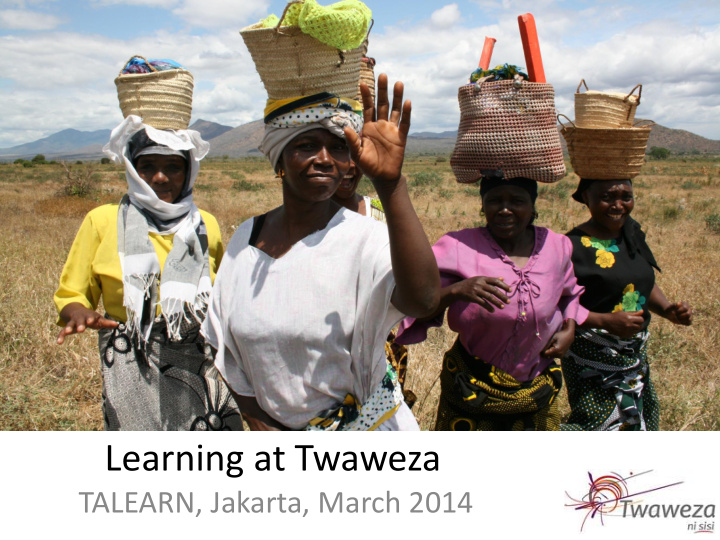



Learning at Twaweza TALEARN, Jakarta, March 2014
What is there to shout about?
We have done a lot of good work… For example: • Open Government Partnership • Big Results Now • Minibuzz • Shujaaz • Uganda Radio Network • …
…but we have a long way to go • Challenges of implementation • Findings from studies: a cold shower • What now?.... --> strategic pivot
Build a solid evaluation portfolio • Puzzle approach (multiple partners) • External teams • Varied methods RCT (COD) • Look for common interest • Evaluators & implementers to mingle frequently
• Do I understand? • Is it new info? • Is it worse than expected? • Do I care? • Is it my responsibility? • Do I have the skills? • Can I do anything? • New ideas for actions? • Can I achieve anything alone? • Will others join me? Source: Lieberman, Posner, Tsai (Twaweza Evaluators)
Citizen Action private public individual reading with going to talk your child to the head teacher collective extra fees for PTA school More dimensions: • direct and indirect • voice and exit • negative action
Why we monitor
Inside Twaweza’s black box: • 93 pages of activities • Most need to be monitored somehow ….
Twaweza monitoring structure How many initiatives? (3) Monitoring of Selected/some short- and medium- term effects ; and experimenting Many (2) Coverage/reach; i ndependently (most) verified counts; external/expert quality ; feedback from audience (1) Production & distribution of outputs; contract All compliance ; pre-testing for quality & internal quality standards
Make monitoring nimble • Feedback loops from users / audience • Selectively measure what you contribute to • Absorb the information • Motivate to use information
Be a learning organization • Keep up enthusiasm & skills • Invest in internal learning structure • Share widely
Balance doing & learning • Do less, better • Always start with a problem • Use strategic incrementalism • Alter the design as you go along (experiental learning) • Measure selectively, in rich detail, and share generously
Thank you!
Recommend
More recommend